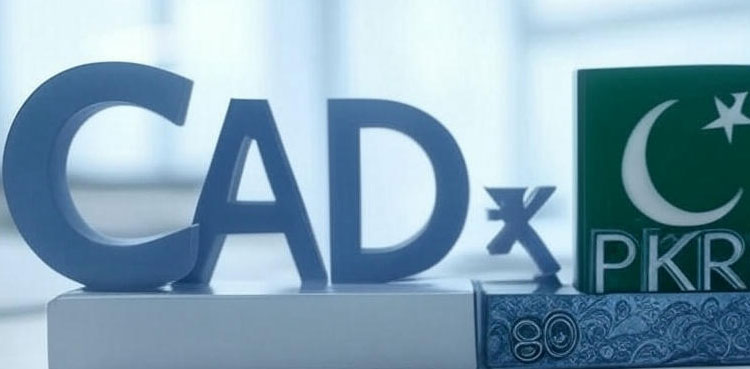Karachi, May 21, 2025 – The Canadian Dollar (CAD) is steady against the Pakistani Rupee (PKR) at 201.55 PKR as of Wednesday, according to the latest forex market data.
The stability is realized in the midst of global economic instability, fueled by trade policies and monetary policy, which presents a breath of relief for businesses and remittance-reliant families in Pakistan.
Valuation Process of CAD to PKR
The exchange rate of Canadian Dollar to Pakistani Rupee is influenced by an intricate combination of economic forces in the foreign exchange (forex) market. The valuation process entails:
Supply and Demand Pattern: The CAD-PKR exchange rate is mostly determined by the supply and demand for the two currencies in international and domestic markets. Increased demand for CAD, usually spurred by Canadian exports such as oil or good economic performance, makes the CAD stronger compared to the PKR. Increased demand for PKR, usually due to remittances or trade, can make it strong.
Central Bank Policies: The roles of the Bank of Canada and the State Bank of Pakistan are central. Canada’s stable monetary policy and low inflation, with a target of 2% inflation, have long underpinned the strength of the CAD. Unlike Pakistan’s more elevated inflationary levels and vulnerability to political changes, which tend to undermine the PKR, as in recent studies.
Global Economic Indicators: Interest rate differentials, trade balances, and geopolitical developments determine the rate. Recent threats from U.S. tariffs, for example, have pressured the CAD, although they have been cushioned by market realignments.
Market Sentiment and Speculation: Expectations of forex traders, which are shaped by world trade practices and economic projections, can lead to short-run volatility. Recent stabilization at 201.48 PKR only shows a market that has already factored in risk such as U.S. tariffs.
Effect of Stability
The CAD stability at 201.55 PKR has significant implications:
Remittances: Remittance-dependent Pakistan gains from a stable rate of CAD-PKR. A stable rate guarantees expected inflows for families, which can fund consumption and domestic economies.
Trade and Businesses: Pakistani businesses importing Canadian products, e.g., machinery or produce, have expected costs, assisting in planning and budgeting. Yet, companies have to be cautious since global trade complexities, such as U.S. tariffs, may upset this equilibrium.
Inflation and Cost of Living: A stable Canadian Dollar mitigates imported inflation for Pakistan, where a weaker PKR often raises the cost of imported goods. This stability could ease pressure on consumer prices, though Pakistan’s broader inflationary challenges persist.
Investment Decisions: Investors and policymakers in both nations can plan with greater confidence under stable exchange conditions. However, ongoing global trade tensions, particularly U.S. policies, may introduce future volatility.
Introduction to CAD and PKR
The Canadian Dollar (CAD), often called the “loonie” from the loon bird on its one-dollar coin, is Canada’s official currency. Governed by the Bank of Canada, the CAD is characterized by stability, supported by Canada’s strong economy, low inflation rate, and high natural resource exports, such as oil and timber. Its price is heavily influenced by world commodity prices and trading relationships, especially with the United States.
The Pakistani Rupee (PKR) is the official currency of Pakistan, overseen by the State Bank of Pakistan. The PKR is used across all regions, from bustling cities like Karachi to rural areas. Its value is highly sensitive to inflation, foreign reserves, and political stability. Over the past decade, the PKR has depreciated significantly against major currencies, moving from 105 PKR per USD in 2012 to 226 PKR per USD by 2022, reflecting economic challenges.
Currency Rates in Pakistan Today
Stability in the Canadian Dollar’s value at 201.55 Pakistani Rupee provides a respite from the uncertainty in a tumultuous global economy. Though the process of valuation represents a delicate balance of supply-demand forces, central bank interventions, and international sentiments, the effects are experienced in remittances, trade, and inflation control. As currencies ride out external shocks such as U.S. tariffs and domestic economic scenarios, businesses and policymakers will remain keenly interested in forex trends to maintain economic strength.


Leave a Comment